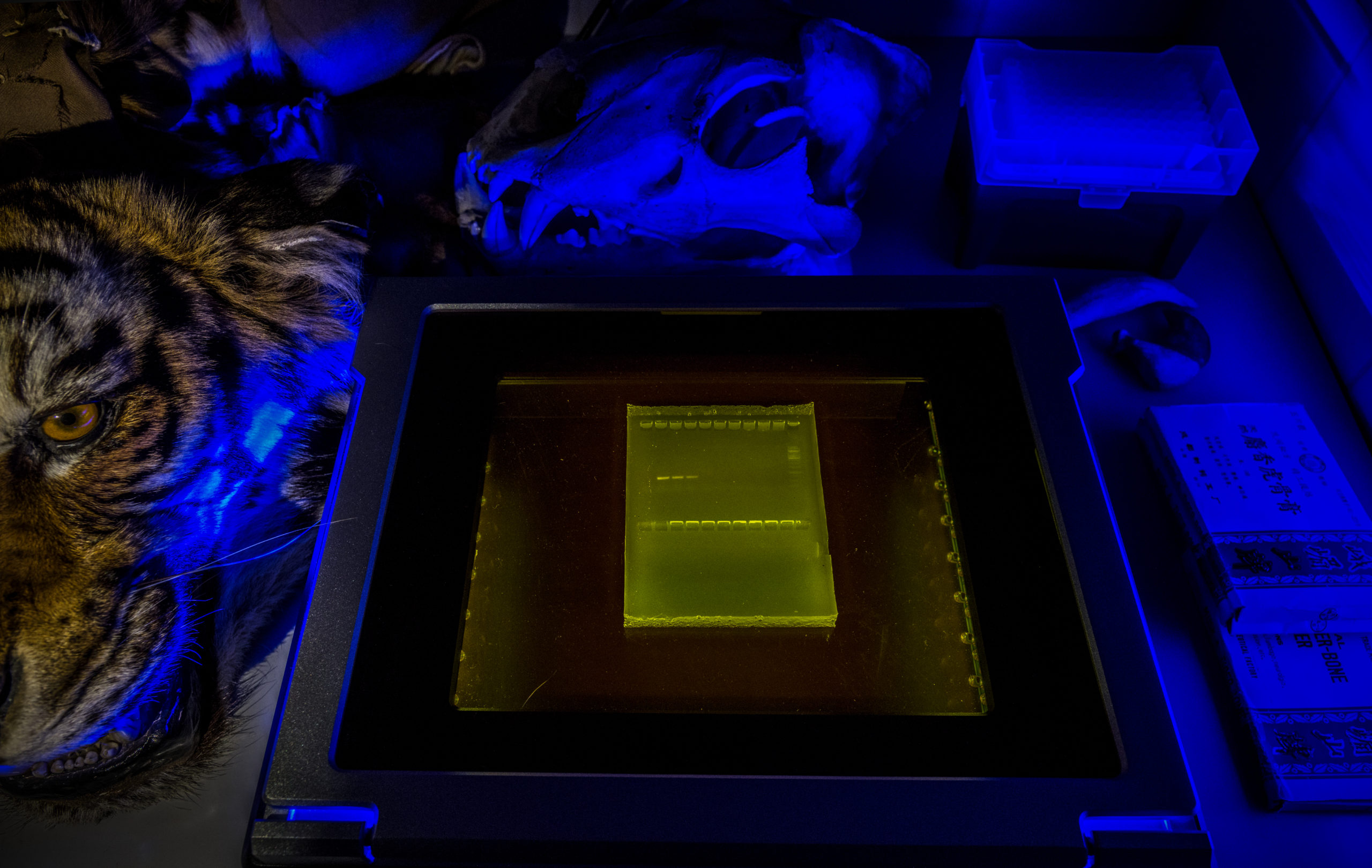Wildlife conservation project receives support from prominent photojournalist
Britta Jaschinski photographs confiscated collection objects at the LIB site in Hamburg

This photograph was taken inside the molecular laboratory where the species of specimens as well as seized wildlife products are determined.
© Britta Jaschinski
Within an interdisciplinary LIB project, measures are being developed to identify and deal with species protection crime. Within the framework of this project, the renowned photojournalist Britta Jaschinski was able to photograph the collection objects seized by customs at the Zoological Museum Hamburg. Her photographs are now being used for knowledge transfer within the museum to draw attention to the connection between zoonoses and illegal wildlife trade.
For her new project “Crime Scene: Virus Spillover – Interference with Nature”, photojournalist Britta Jaschinski came from Great Britain to the Zoological Museum in Hamburg. The winner of numerous international awards is allowed to photograph objects confiscated by customs that are in the collections of the LIB site in Hamburg. She arranges her motifs like puzzle pieces within a picture so that they tell a new story in context: In this way, she shows how a viral disease finds its way from animals to humans and what part our daily consumer behaviour plays in this. “Everyone can do their part to improve the situation by critically questioning our consumer behaviour,” says Jaschinski.
“With my motifs, I show, for example, that palm oil – which is contained in many industrially manufactured products – is partly to blame for the fact that the rainforest is being cleared, especially in Borneo,” summarises Jaschinski. This clearing not only ensures that orangutans are acutely threatened with extinction – every felled tree is a potential “virus explosion”. In the process, the loggers are not only destroying essential habitats for wildlife: “While the animals are adapted to the local viruses, the workers can become infected if they provide themselves with wild animal meat,” she says. The photographer wants to capture this path of the viruses in her pictures and thus reach people who otherwise do not deal with scientific knowledge in depth.

© Finn Heuer
The chain of contagion of viral diseases from animals to humans is also a topic being addressed at the Zoological Museum in Hamburg. An interdisciplinary transfer project financed with funds from the University of Hamburg as part of the Cluster of Excellence deals with the illegal trade of wild animals in an overarching way, building a bridge to the cause of zoonoses as well as pandemics. Communicating research findings is an important part of the project, knows Daniel Bein as Head of Education and Outreach at the LIB Hamburg site: “We are happy to be able to work with such a renowned photojournalist as Britta Jaschinski. We can use her photographs for the further expansion of the zoonoses section in the museum.”
The already existing area in the Zoological Museum will not only be further expanded, but the educational offer for schoolchildren will also be extended thematically to match: Courses will be offered for the younger ones in which they will learn how turtles can be identified morphologically, for example, on the basis of their shells. Older and adult course participants will learn how to identify the exact species using crocodile skins. In addition, exciting geo-caching activities are being developed for teenagers, which will take place both in the museum and in the surrounding area.
Within the LIB, several departments are working hand in hand to advance the transfer project on illegal wildlife trade. For example, Dr Oliver Hawlitschek, the head of the molecular laboratory in Hamburg, is working on a database that will help identify confiscated objects. In the future, cooperations with the LIB site in Bonn are also planned.


